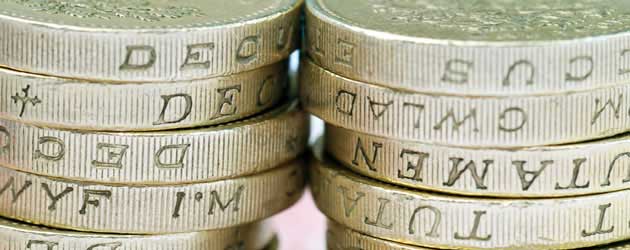
The Pound to US Dollar exchange rate (GBP/USD) rallied 0.8 cents yesterday as traders reacted to comments from a Federal Reserve official suggesting that the Central Bank’s willingness to adjust the pace of its asset purchasing programme, according to the health of the US economy, would still stand even after a potential slowdown. In other words: if the Fed acts in response to positive data it does not necessarily mean that QE3 will be immune to further increases if domestic data then takes a turn for the worse.
San Francisco Fed President John Williams said:
“Even if we do adjust downward our purchases, it doesn’t mean that we’re now in some autopilot of moving in the same direction. You could even imagine a scenario where we adjust it downward based on good data and then adjust it back [if the economy weakened]”.
Williams’ statement appeared to contradict the general consensus in financial markets that once the Fed begins to taper asset purchases, it will only be a matter of time before the QE3 programme is unwound completely. This new, consistently flexible, outlook for quantitative easing boosted risk sentiment and subsequently hindered the safe haven US Dollar’s progress.
GBP/USD rose to 1.5120 on the news and the Australian Dollar increased half a cent to 0.9757. The risk-sensitive New Zealand Dollar also advanced 0.5 cents, whilst the ‘Greenback’ lost out on around -0.4 cents to its North American counterpart, the Canadian Dollar.
Earlier in the afternoon, the US Dollar received a slight boost as Initial Jobless Claims fell from 363,000 to 340,000. The modestly optimistic labour market figure was better-than-expected, narrowly beating forecasts of 345,000. A separate report showed an improvement in the housing market, as the House Price Index inched higher from 0.9% to 1.3% in March, whilst the latest Markit PMI report indicated that the US Manufacturing Sector remained at a fairly encouraging level of 51.9 during May. The trio of mildly satisfactory data boded better for QE3 slowdown bets, although this USD-positive notion was barely felt in the Pound to US Dollar exchange rate.
The only significant economic data release to come out of Britain yesterday was the Office for National Statistics’ second estimate of first quarter Gross Domestic Product. The report confirmed the rate of growth between January and March at 0.3%, which, on the surface of things, appeared positive for Sterling.
However, as investors delved a little bit deeper into the dataset it emerged that a large portion of the positive outcome had been influenced by a build-up of inventories, which suggests that demand was weak. This ambivalent component added around 0.4% to the British economy. Furthermore, the report showed that UK exports declined by -0.8% and business investment shrank -0.8%. The most encouraging element of the report was a 0.6% rise in Service Sector output, which accounts for around 70% of UK GDP.
Technical resistance for GBP/USD remains at 1.5250 then 1.5410, whereas psychological support levels at 1.5000 should cap any US Dollar rallies until the Fed finally announces its first tapering of QE3.

Comments are closed.